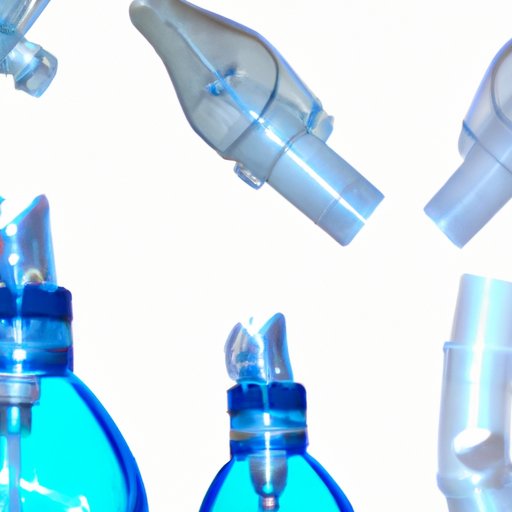
I. Introduction
When it comes to respiratory illnesses, it’s essential to understand and properly manage symptoms. One common way to relieve breathing difficulties is through breathing treatments. In this article, we’ll explore what breathing treatments are, how they work, and why it’s important to understand their use.
II. Comprehensive Guide to Breathing Treatments and How They Work
Breathing treatments are used to relieve respiratory symptoms like shortness of breath, wheezing, and chest tightness. These treatments work by delivering medication directly to the lungs, allowing for quicker and more effective relief of symptoms.
The medication delivered through breathing treatments can either be bronchodilators, which relax the muscles around the airways, or anti-inflammatory medications, which reduce swelling in the airways. These treatments can also use a combination of both types of medication.
Breathing treatments are important for managing respiratory conditions like asthma, chronic obstructive pulmonary disease (COPD), and cystic fibrosis. These conditions can cause long-term damage to the lungs if not properly managed, making breathing treatments a vital tool in maintaining respiratory health.
III. Understanding the Different Types of Breathing Treatments Available
There are several different types of breathing treatments, each with their own unique delivery method. Here are some of the most common:
Inhalers
Inhalers are the most common type of breathing treatment. They deliver medication through a handheld device that releases a mist of medication when activated. Inhalers are small and portable, making them easy to carry and use throughout the day.
Nebulizers
Nebulizers are another common type of breathing treatment. They deliver medication through a machine that turns liquid medication into a mist that can be inhaled through a mask. Nebulizers are often used for younger children who may have difficulty using inhalers.
Positive Airway Pressure (PAP) Machines
PAP machines are used to treat sleep apnea, a condition in which a person’s airway becomes blocked while they sleep. These machines deliver constant air pressure to keep the airway open and prevent interruptions in breathing.
Oxygen Therapy
Oxygen therapy is used to treat conditions that cause low oxygen levels in the blood, like chronic obstructive pulmonary disease (COPD). Oxygen therapy delivers extra oxygen through a mask or nasal cannula to increase oxygen levels and improve breathing.
Other Types of Breathing Treatments
There are also several other types of breathing treatments available, including spacers, which attach to inhalers to improve medication delivery; and airway clearance devices, which help to clear mucus and other debris from the lungs.
IV. How Breathing Treatments Can Relieve and Manage Respiratory Conditions
Breathing treatments are essential for managing respiratory conditions like asthma, COPD, and cystic fibrosis. These conditions can cause inflammation and constriction in the airways, leading to breathing difficulties.
Breathing treatments work by delivering medication directly to the lungs, which can relieve symptoms like coughing, wheezing, and shortness of breath. They can also help to prevent long-term damage to the lungs caused by inflammation.
It’s essential for individuals with respiratory conditions to stick with their treatment plans to manage symptoms effectively. Proper treatment can help prevent exacerbations and improve overall respiratory health.
V. The Benefits and Potential Risks of Receiving a Breathing Treatment
There are several benefits to receiving a breathing treatment, including:
- Quick relief of respiratory symptoms
- Improved lung function
- Reduced risk of exacerbations
- Improved quality of life
However, there are also risks associated with breathing treatments, including possible side effects like:
- Headaches
- Nausea
- Nervousness
- Increased heart rate
It’s important to discuss the risks and benefits of breathing treatments with a healthcare provider before starting treatment.
VI. Expert Insights on When to Consider a Breathing Treatment and What to Expect During the Process
Factors that may indicate a need for breathing treatments include:
- Wheezing
- Chest tightness
- Shortness of breath
- Coughing
To prepare for a breathing treatment, it’s important to:
- Follow all instructions provided by the healthcare provider
- Clean the inhaler or nebulizer before use
- Take slow, deep breaths during the treatment
- Stay relaxed and calm during the treatment
It’s important to discuss any concerns or questions about breathing treatments with a healthcare provider.
VII. Conclusion
Breathing treatments are a fundamental tool in managing respiratory symptoms and promoting long-term respiratory health. Understanding the different types of breathing treatments available, the benefits and risks associated with treatment, and when to consider a breathing treatment is critical in ensuring proper respiratory management. Remember to always seek medical advice for respiratory difficulties and always follow treatment plans provided by healthcare providers for optimal respiratory health.





